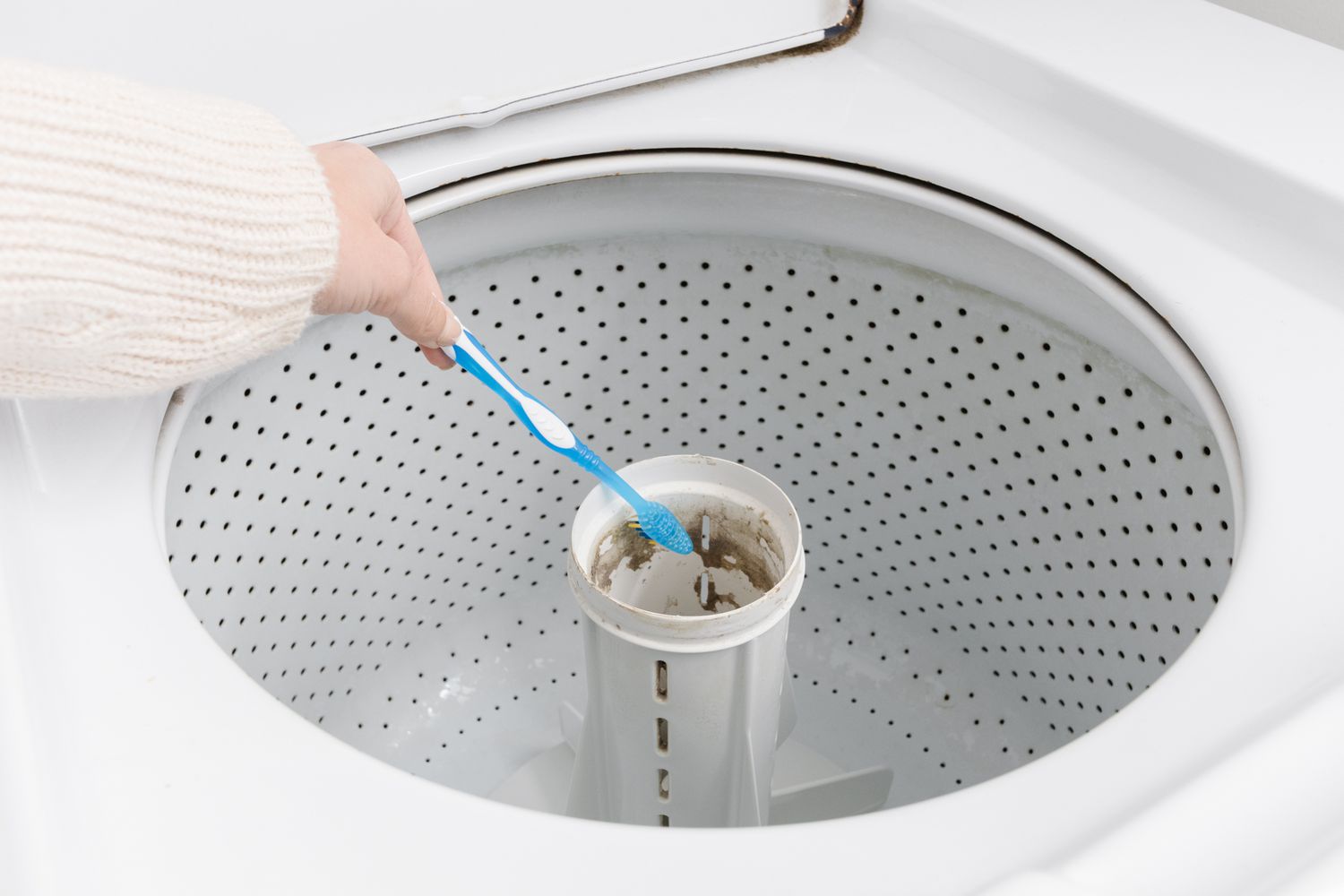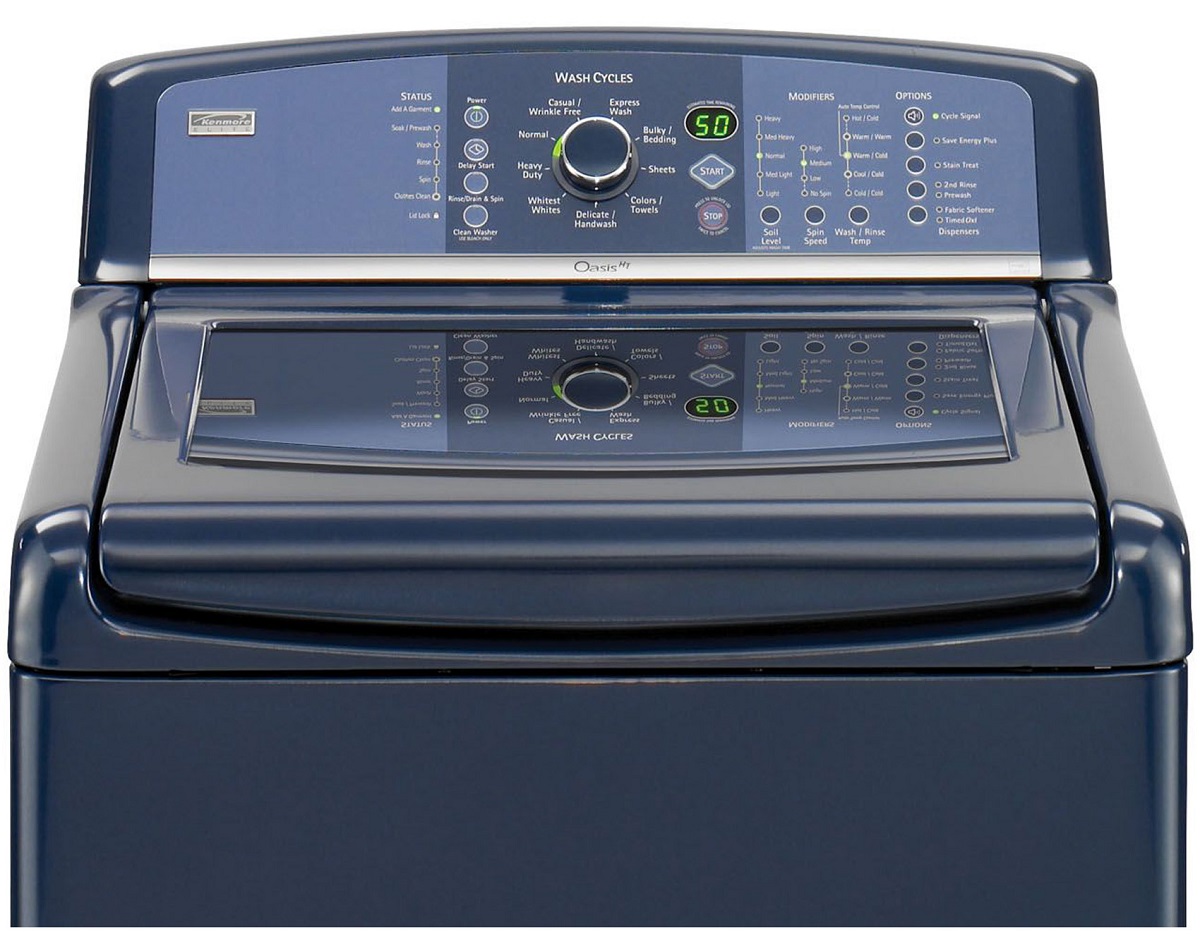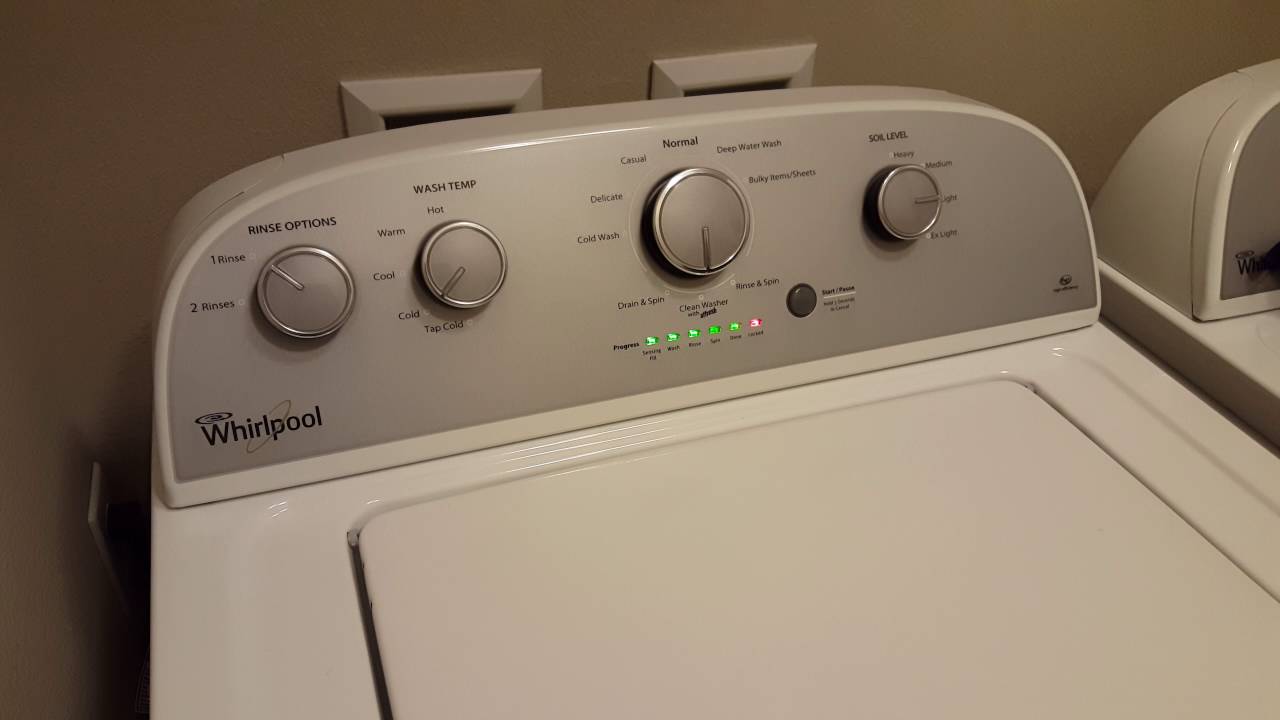Home>Home Appliances>Laundry Appliances>How To Wash Couch Covers In A Washing Machine


Laundry Appliances
How To Wash Couch Covers In A Washing Machine
Modified: August 17, 2024
Learn how to properly wash couch covers in a washing machine with our expert laundry appliance tips. Keep your furniture looking fresh and clean!
(Many of the links in this article redirect to a specific reviewed product. Your purchase of these products through affiliate links helps to generate commission for Storables.com, at no extra cost. Learn more)
Preparing the Couch Covers for Washing
Before tossing your couch covers into the washing machine, it's crucial to prepare them properly to ensure a successful and effective cleaning process. Here's a step-by-step guide to help you prepare your couch covers for washing:
-
Read the Care Label: The first step in preparing your couch covers for washing is to carefully read the care label attached to the covers. The care label provides essential information about the fabric type, washing instructions, and any specific precautions or limitations. It's important to follow the manufacturer's guidelines to prevent damaging the fabric or altering its appearance.
-
Check for Stains and Spills: Inspect the couch covers for any visible stains, spills, or spots. If you notice any localized stains, it's advisable to pre-treat them before washing. You can use a gentle stain remover or a mixture of mild detergent and water to spot-treat the affected areas. Allow the pre-treatment solution to sit for a few minutes to loosen the stains before proceeding to the next step.
-
Remove Loose Debris: Shake or gently brush the couch covers to remove any loose debris, pet hair, or crumbs. This preliminary step helps minimize the amount of debris that ends up in the washing machine, preventing potential clogs and ensuring a cleaner wash.
-
Close Zippers and Fasten Buttons: Before washing the couch covers, ensure that all zippers are closed, and any buttons or fasteners are secured. This prevents the covers from getting tangled or snagged during the washing cycle, reducing the risk of damage to the fabric or the washing machine itself.
-
Turn Covers Inside Out (If Applicable): If your couch covers are reversible or have a different fabric on the underside, consider turning them inside out before washing. This step can help protect the outer surface of the covers and preserve their color and texture during the washing process.
By following these preparatory steps, you can set the stage for a successful and thorough cleaning of your couch covers. Taking the time to prepare the covers properly can contribute to better washing results and help maintain the quality and appearance of the fabric.
Key Takeaways:
- Properly preparing and loading couch covers into the washing machine ensures effective cleaning and preserves their quality. Follow care labels, use gentle detergent, and balance the load for best results.
- To maintain couch covers, vacuum regularly, address stains promptly, and consider professional cleaning for delicate fabrics. Store covers in breathable containers and handle with care for longevity.
Read more: How To Cover A Couch With A Blanket
Selecting the Right Detergent and Settings
Choosing the appropriate detergent and machine settings is pivotal in ensuring the optimal cleanliness and preservation of your couch covers. Here's a comprehensive guide to help you make the right choices for a successful washing process:
Selecting the Right Detergent
When it comes to washing couch covers, opting for a gentle, color-safe detergent is paramount. Look for detergents specifically formulated for delicate fabrics or those labeled as suitable for cold water washes. These detergents are designed to effectively cleanse the fabric without causing damage or color fading. Additionally, consider using a detergent that is free from harsh chemicals and artificial fragrances to minimize the risk of skin irritation and fabric deterioration.
For covers with specific cleaning requirements, such as those made of microfiber or treated with stain-resistant coatings, it's advisable to use a detergent that caters to these needs. Some manufacturers may recommend specialized detergents to maintain the fabric's unique properties and prolong its lifespan.
Machine Settings
Selecting the appropriate washing machine settings is equally crucial in safeguarding the integrity of your couch covers. Here's a breakdown of the recommended settings for washing couch covers:
Water Temperature:
-
Cold Water: For most couch covers, especially those crafted from delicate materials or featuring vibrant colors, washing in cold water is the safest option. Cold water helps prevent color bleeding and minimizes the risk of shrinkage or damage to the fabric. It's particularly beneficial for covers with intricate patterns or embellishments that require gentle care.
-
Warm Water: In cases where the covers are heavily soiled or require a more thorough cleaning, using warm water can be suitable. However, always refer to the care label to ensure that warm water is compatible with the fabric type and any decorative elements.
Cycle Selection:
- Gentle or Delicate Cycle: When washing couch covers, opt for the gentle or delicate cycle on your washing machine. These specialized cycles feature slower agitation and reduced spinning speeds, providing a milder washing action that is ideal for delicate fabrics. The gentle cycle helps prevent excessive wear and tear on the covers, preserving their texture and appearance.
Additional Considerations:
-
Avoid Overloading: To allow sufficient room for the covers to move freely and be thoroughly cleaned, avoid overloading the washing machine. Overcrowding can lead to inadequate cleaning and may cause the covers to wrinkle or crease excessively.
-
Skip the Fabric Softener: While fabric softeners are commonly used in laundry, it's best to skip this step when washing couch covers. Fabric softeners can leave a residue that affects the fabric's breathability and may compromise its appearance over time.
By carefully selecting the right detergent and machine settings, you can ensure that your couch covers receive the gentle yet effective treatment they deserve. These considerations play a pivotal role in maintaining the quality and longevity of your covers, allowing you to enjoy their comfort and aesthetic appeal for years to come.
Loading the Couch Covers into the Washing Machine
Once you've prepared your couch covers and selected the appropriate detergent and machine settings, the next crucial step is loading the covers into the washing machine. Proper loading ensures that the covers are effectively cleaned without compromising their integrity. Here's a detailed guide on how to load your couch covers into the washing machine for optimal results:
Read more: How To Cover Couch Cushions With Fabric
Sorting by Size and Fabric Type
Before loading the covers, it's essential to sort them based on their size and fabric type. Separating covers of different sizes helps prevent tangling and ensures that each cover receives thorough cleaning. Additionally, sorting by fabric type allows you to tailor the washing process to the specific needs of each cover. For instance, covers made of delicate materials may require a gentler washing cycle compared to sturdier fabrics.
Distributing Evenly
When placing the covers in the washing machine, distribute them evenly to maintain balance during the washing cycle. Uneven distribution can lead to excessive vibration and may affect the machine's performance. Ensure that the covers are spread out evenly to prevent them from clumping together, which can hinder the cleaning process and result in uneven detergent distribution.
Maximizing Capacity Without Overcrowding
While it's important to maximize the washing machine's capacity, it's equally crucial to avoid overcrowding. Overloading the machine can impede the covers' movement and hinder the washing action, leading to subpar cleaning results. Aim to fill the machine to a comfortable capacity, allowing the covers to move freely and ensuring that they receive adequate exposure to the detergent and water.
Securing Loose Straps and Ties
Before starting the washing cycle, take a moment to secure any loose straps, ties, or decorative elements on the covers. Fastening these components helps prevent them from getting entangled with other items or the machine's agitator, reducing the risk of damage to the covers and the washing machine itself. Additionally, securing loose elements contributes to a smoother washing process and minimizes the need for post-wash adjustments.
Read also: 10 Superior Washer Cover For 2025
Considering Load Balance
When loading multiple covers, pay attention to achieving load balance within the washing machine. Distribute the covers in a way that promotes even weight distribution, preventing the machine from becoming unbalanced during the washing cycle. Proper load balance minimizes excessive movement and vibration, enhancing the overall efficiency and effectiveness of the cleaning process.
By following these guidelines for loading your couch covers into the washing machine, you can ensure that they receive the care and attention they deserve during the cleaning process. Taking the time to load the covers thoughtfully contributes to a successful wash, preserving their quality and extending their lifespan.
Washing and Drying the Couch Covers
After the careful preparation and loading of your couch covers, it's time to delve into the crucial stages of washing and drying. These steps are pivotal in determining the cleanliness and overall condition of your covers post-wash. Here's a comprehensive guide to ensure that your couch covers receive the optimal treatment during the washing and drying process:
Washing the Couch Covers
-
Initiating the Washing Cycle: Start the washing machine, ensuring that the selected settings align with the care label instructions and the specific requirements of your couch covers. The gentle or delicate cycle, coupled with the appropriate water temperature and detergent, sets the stage for a thorough yet gentle cleaning process.
-
Monitoring the Washing Process: Throughout the washing cycle, it's beneficial to periodically check on the covers to ensure that they are moving freely and receiving the intended treatment. This proactive approach helps address any potential issues, such as uneven distribution or entangled straps, before they impact the overall washing outcome.
-
Completing the Washing Cycle: Once the washing cycle is complete, promptly remove the couch covers from the machine to prevent prolonged exposure to moisture. Avoid leaving the covers in the machine for an extended period, as this can lead to wrinkling and musty odors.
Drying the Couch Covers
-
Selecting the Drying Method: Depending on the fabric type and care label instructions, you can opt for air-drying or using a dryer. Air-drying is particularly suitable for delicate covers, as it minimizes the risk of shrinkage and fabric damage. If using a dryer, choose a low-heat setting to prevent excessive heat exposure.
-
Preparing for Drying: Before proceeding with the chosen drying method, gently reshape the covers to their original dimensions and smooth out any wrinkles. This preparatory step contributes to a more uniform drying process and helps maintain the covers' aesthetic appeal.
-
Monitoring the Drying Process: Whether air-drying indoors or using a dryer, periodically check the covers to gauge their drying progress. This allows you to intervene if necessary, such as adjusting the covers' position for more even drying or modifying the drying duration based on the covers' moisture levels.
-
Ensuring Complete Dryness: Once the drying process is complete, ensure that the covers are thoroughly dry before placing them back on your furniture. Lingering moisture can lead to mildew growth and musty odors, compromising the cleanliness and comfort of the covers.
By following these detailed steps for washing and drying your couch covers, you can uphold their quality and extend their longevity. These meticulous efforts contribute to a successful cleaning process, allowing you to enjoy fresh, clean covers that enhance the comfort and visual appeal of your living space.
Read also: 8 Superior Washer Dryer Cover For 2025
Tips for Maintaining the Quality of Couch Covers
-
Regular Vacuuming: Incorporate regular vacuuming sessions to remove surface debris and prevent it from settling into the fabric. Utilize a soft brush attachment to gently vacuum the covers, paying attention to seams and crevices where dirt may accumulate.
-
Spot Cleaning: Address spills and stains promptly by spot cleaning the affected areas with a mild detergent or specialized fabric cleaner. Blot the stains gently to prevent them from spreading and causing further discoloration.
-
Rotation: If your couch covers are reversible or interchangeable, consider rotating them periodically. This practice promotes even wear and minimizes the development of permanent creases or imprints from prolonged use in specific areas.
-
Protective Layers: For households with pets or young children, using protective layers such as throws or blankets can shield the couch covers from potential damage. These additional barriers help mitigate the impact of spills, pet hair, and general wear and tear.
-
Sunlight Exposure: Minimize prolonged exposure to direct sunlight, as it can cause fading and deterioration of the fabric over time. Positioning your furniture away from direct sunlight or using curtains and blinds can help preserve the vibrancy and integrity of the covers.
-
Professional Cleaning: Consider professional cleaning services for deep cleaning and maintenance, especially for covers with intricate designs or delicate fabrics. Professional cleaners have the expertise to handle specialized materials and ensure thorough cleansing without compromising the fabric.
-
Storage Precautions: When storing spare or seasonal couch covers, opt for breathable storage containers or garment bags to protect them from dust and moisture. Avoid storing covers in plastic bags, as they can trap humidity and lead to mold or mildew formation.
-
Read Care Labels: Always adhere to the care instructions provided on the labels of your couch covers. These guidelines offer valuable insights into the specific cleaning and maintenance requirements tailored to the fabric type, ensuring that you treat the covers with the appropriate care.
-
Gentle Handling: When removing and repositioning the covers, handle them with care to prevent stretching or tearing. Gentle handling prolongs the lifespan of the covers and maintains their original shape and structure.
-
Regular Inspection: Periodically inspect the covers for any signs of wear, loose seams, or potential issues. Identifying and addressing these concerns early can prevent minor problems from escalating and preserve the overall quality of the covers.
Incorporating these maintenance tips into your routine can significantly contribute to the longevity and pristine condition of your couch covers, allowing you to enjoy their comfort and aesthetic appeal for years to come.
Frequently Asked Questions about How To Wash Couch Covers In A Washing Machine
Was this page helpful?
At Storables.com, we guarantee accurate and reliable information. Our content, validated by Expert Board Contributors, is crafted following stringent Editorial Policies. We're committed to providing you with well-researched, expert-backed insights for all your informational needs.













0 thoughts on “How To Wash Couch Covers In A Washing Machine”